




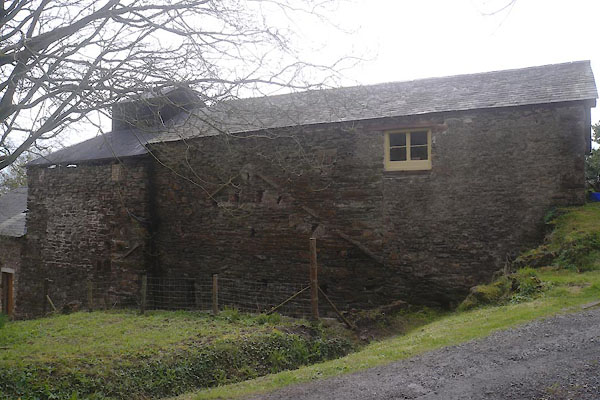
CEY33.jpg (taken 29.4.2016)
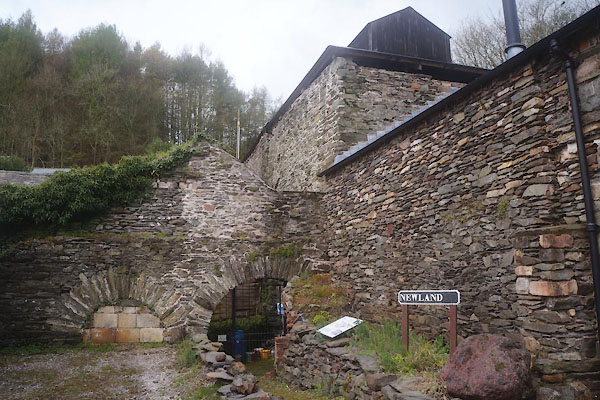
CEY34.jpg (taken 29.4.2016)
"Iron Works"
placename:- Newland Furnace
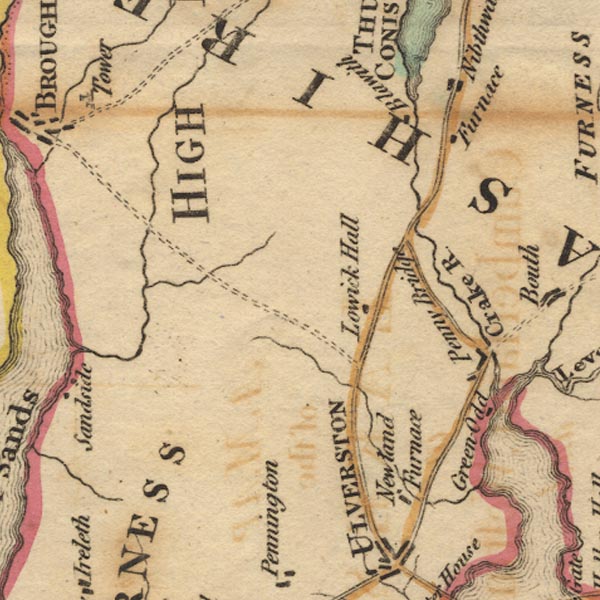
Ws02SD28.jpg
item:- Armitt Library : A1221.1
Image © see bottom of page
placename:- Newland Blast Furnace
courtesy of English Heritage
"NEWLAND BLAST FURNACE AND ATTACHED ANCILLARY BUILDINGS / / / EGTON WITH NEWLAND / SOUTH LAKELAND / CUMBRIA / II[star] / 468419 / SD2999879709"
courtesy of English Heritage
"Iron-making furnace, and attached ancillary buildings, now either disused, or used as stores. Late C18 or earlier with later additions; remodelled to facilitate firing with coke, 1874, closure in 1891, and restoration, commenced 1991, continuing at time of inspection. Blast furnace, intended for charcoal firing, later adapted to coke firing, and with remains of casting house to south, blowing house; formerly with charging house above, to west, and ancillary buildings to east and south-west. Roughly coursed lakeland slatestone, with sandstone quoining to some external walls, and green westmorland slate roof coverings, laid to diminishing courses. Blast furnace, a now truncated, tapered square tower, with tapered and bellied circular firebrick lined furnace chamber within, now partially collapsed on west side. External wall to north, east and west walls, enclosed by attached buildings and south wall, with tapping arch, into now roofless casting shed. North elevation; stepped range of buildings of three parts. Further tower off centre, roofless, and with massive regular quoins, and a blocked inserted vent. To the east, low two bay, two storey building of rubble stone and firebrick with inserted C20 garage door and double opening above, now blocked. Inserted doorway to west, with firebrick quoining below massive timber lintel. To west of furnace, taller three-storeyed range with profile of former attached wheelhouse for water-powered blowing engine, and seatings for former roof timbers visible. Opening for water course overflow to west end of elevation. North gable with blocked double doorway to upper storey from ramped ground. South elevation with partial reconstruction of east end above courses of horizontally-set roof slate. T o the west, shallow brick arch springs from low brick retaining wall at angle of main range and east sidewall of former casting house. Furnace bay with massive segmental arch, built in firebrick to tapping opening, defined by splayed walling of great thickness. Further to west, wide, semi-circular arch-headed opening from former blowing house, and a blocked, segmentally-arched opening further west. West end bay with massive inserted timber beam, supported by cast iron column, with inner wall 1 metre wide inside line of outer wall. Interior: Firebrick lined furnace, with tuyere arch and associated masonry having collapsed on west side, and undergoing restoration, following insertion of massive time beam. Mounting blocks of former blowing engine to north-west corner of blowing house, west of furnace. Floor beams to former charging floor above. Walls to former casting house enclose open area to south, with two arched openings to east wall, and shallow gable above. Attached ancillary building to south-west, with single casement window to west elevation and blank wall onto casting house area. The Newland Furnace represents the late survival of charcoal iron-making on the west coast of Britain, and in the mid C 19, exerted a controlling influence in the industry, from sites in Newland, Bonall in Scotland, and Warsash on Southampton water. The ironworks closed in 1891."
courtesy of English Heritage
"OUTBUILDING FORMERLY CHARCOAL STORAGE BARN TO THE NORTH WEST OF NEWLAND BLAST FURNACE / / / EGTON WITH NEWLAND / SOUTH LAKELAND / CUMBRIA / II / 468420 / SD2995079720"
courtesy of English Heritage
"Charcoal barn. Now storage building. Late C18 or early C19 with later additions and C20 alterations and additions. Rubble Lakeland slatestone, brought to courses, with massive sandstone quoins and green Westmorland slate roof coverings, laid to diminishing courses. Irregular T -plan with principal range running east-west, and with smaller wings at right angles to west end bay to north and south, second (roofless) wing to north, at centre of principal range. South-elevation; two storey main range of approximated fire bays, with inserted full height C20 double doorway to east end, and with C20 rendered brick ofshut to front. Two bay wing to west extends southwards, with C20 doorways. East gable to principal range, with opening to gable apex, now with 6 over 6 pane sash window. At level of sidewall head, drip course of horizontally set projecting roof slates. West elevation, set on rising ground, with advanced west gable, flanked by single storey ranges, each with an inserted window. Tall opening to centre of gable, formerly a doorway, formerly served by access ramp &om track to north. Interior not inspected, but survey evidence confirms queen strut roof trusses supporting quadruple purlin roof Charcoal barns were characteristic elements of charcoal iron-producing areas, and an essential part of a process dependant upon massive quantities of charcoal fuel."
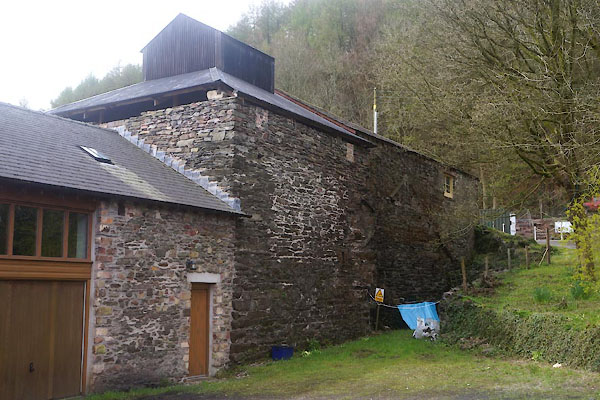
CEY35.jpg (taken 29.4.2016)
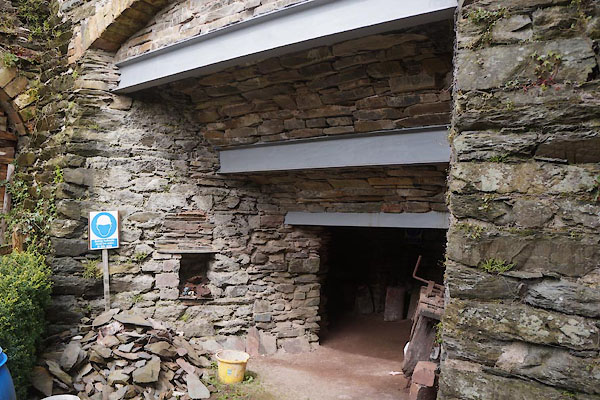
CEY36.jpg (taken 29.4.2016)

 Lakes Guides menu.
Lakes Guides menu.